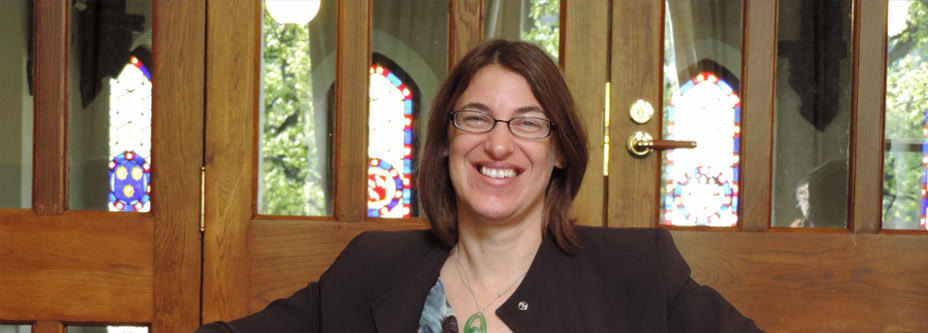
Fortune’s favours
Disappointment has had serendipitous outcomes for Dr AnnMarie Oien, who now holds a senior position with US aerospace giant Lockheed Martin.
For those pursuing doctoral degrees, answering questions is a way of life. But as the thesis nears completion, the question that emerges is “where to from here?”.
Such was the question facing Dr AnnMarie Oien when, in 1996, she became the second woman to graduate from Otago with a PhD in physics.
Oien was already familiar with the good fortune that can come from seemingly unfortunate outcomes, for the former Rhodes scholarship finalist had, by then, realised that she was lucky to have been passed over for the Rhodes honour several years earlier as it led her to undertake doctoral research at Otago instead.
This research included developing the Southern Hemisphere’s first laser atomic cooling facility via magneto-optic trapping – groundbreaking science that provided the foundation for a career which has answered the “where to from here” question rather spectacularly. Oien is now a senior staff project engineer and the Lean Six Sigma lead in the Space Systems division at Lockheed Martin, an American aerospace, defence, security and advanced technology company with global interests, 123,000 employees and a $US8 billion turnover.
All this is a long way from the modest lab in Otago’s Department of Physics where her research took place.
Atomic cooling with a magneto-optical trap involves tuning the frequency of light from opposing lasers to slow the atoms within low-density gases. Slowing the atoms' speed to a near standstill reduces their temperature and enables their behaviour to be observed.
For Oien, this achievement took the form of an eerie flicker of light – "like a sodium streetlight" – that remains imprinted on her mind 20 years on. It was an impressive and appropriate feat for a young woman who had, as a child, enjoyed playing with Meccano and chemistry sets rather than dolls.
Oien was born in the United States to a schoolteacher mother and architect father who immigrated to New Zealand before she started school. At the end of her first year at university she decided the bits of chemistry she liked best – atomic chemistry – were really physics, so physics became her major.
As an undergraduate she held an Association of Women in Sciences Scholarship and supplemented this with a – predictably unconventional – holiday job at the Tiwai Point aluminium smelter. Here she would don the same woollen overalls (wool being the least flammable fibre) as the men who vastly outnumbered her to manage the smelter’s daily output reports.
In 1990 the budding scientist was asked to investigate the failure of one of the facility’s smelting pots. After careful excavation and documentation of the pot’s brick lining, she discovered a fault in some of the bricks. This investigation was to become her first root-cause analysis and a precursor to the hundreds she has since done in her job at Lockheed Martin.
Oien’s career in industry is thanks to a second unfortunate outcome, this time after she had completed her doctorate. She applied for, but missed out on, a lecturer position at Otago and so tried for funding to take up a postdoctoral fellowship in England. While waiting for news on this, she attended a talk by a representative from a laser company called Coherent Technologies and became intrigued. She visited the Colorado-based firm after presenting a paper at a US conference and ended up giving a presentation on non-linear conversion lasers. A job offer soon followed.
"In the meantime I found out I had won the Marsden fellowship that would enable me to take up the postdoc," she says. "But, in the end, I decided on the US job because it had longevity and I thought there was more potential to build a career."
In her work, first as a research scientist and then research science manager at Coherent Technologies, Oien developed world-first, solid-state lasers and was co-inventor on two patents.
Then, in 2005, the goliath Lockheed Martin bought the smaller company and she saw the potential to develop her career further. Her penchant for problem-solving led her to undertake Lean Six Sigma training, a waste minimisation and process improvement discipline in which she now holds a master black belt – the highest certification.
"Physics is about finding out how things work at a fundamental level. It involves scientific method, investigation and problem-solving," explains Oien. "I simply translated these skills into a new field."
These days she works with teams of between 10 and 20 people, focusing on areas of process improvement and problem-solving in the Space Systems division.
"My nickname is 'AMO'. I can be sitting in my office and I'll get a call from a VP or director a few levels up the chain from me. They tell me what they have going on and they'll say, 'can you help us out, AMO?'"
Unsurprisingly, Oien’s skills were spotted by the Alumni of the University of Otago in America, Inc when she attended a 2009 gathering in San Francisco. She was invited on to the board of directors where she currently holds the position of secretary, a role which, she says, enables her to give back to the institution that has given her so much.
"I'm really excited to contribute to the alumni association by finding new ways to engage with alumni and connect them with each other, whether that’s with advice on how to get a new position, help identifying a good university for postgraduate study, or finding a pub where they serve decent beer.
"It’s part of a virtuous circle to go out into the world, do well, and then be able to give back. It’s a very fulfilling part of my life."
REBECCA TANSLEY
Photo: Jude McCracken
